 Mike Self
.
December 21, 2022
.
Department
Mike Self
.
December 21, 2022
.
Department

With the Ford F-Series being the best-selling truck in the United States every year since 1977, it somehow still tends to play second fiddle to GM trucks when it comes to customizing and even restoration. They have always been an amazing platform to build off of, but the F-150 hasn’t enjoyed the same stature as its heavier-duty siblings, such as the F-250 and F-350.
We think those times are changing, as GM truck pricing has been going through the roof and plenty of F-150s are just waiting for their chance to prove themselves as viable custom trucks. You may have some questions about F-150s before taking the plunge into uncharted territory, and hopefully we’ve addressed them on the following pages. Even if you’ve been a Ford head all along, you may learn something new!

The short answer is that, historically, the F-150 has been considered one of the most dependable trucks in the US since its introduction. Many publications, including US News (which gave it an 86/100 score in recent years), have consistently rated it as highly reliable next to many of its competitors. We think it’s important to note that, in the long run, a truck’s reliability is greatly dependent on consistent preventative maintenance and overall care. In other words, you get out what you put in!

As can be expected, the F-150’s fuel economy has improved over the years, but of course that depends on which engine and transmission you’re running. According to FuelEconomy.gov, a 1984 F-150 with the 4.9L inline six and 4-speed AOD transmission could expect about 14 mpg on streets and 18 mpg on highways. A 2022 F-150 equipped with the 2.7L turbo V-6, on the other hand, is estimated at 20 mpg street and 26 mpg highway.
Upgrading that ‘84 to the 351 Windsor V-8 with the beefy 3-speed C6 automatic would drop MPGs down to 11/12, while a 2022 F-150 with the 5.0L Coyote V-8 and 10-speed auto nets 17/24.
And then, of course, there’s the new Lightning, which is rated at an equivalent of 78 mpg city and 63 mpg highway. So yeah, you could say that the F-150 can definitely be good on gas!

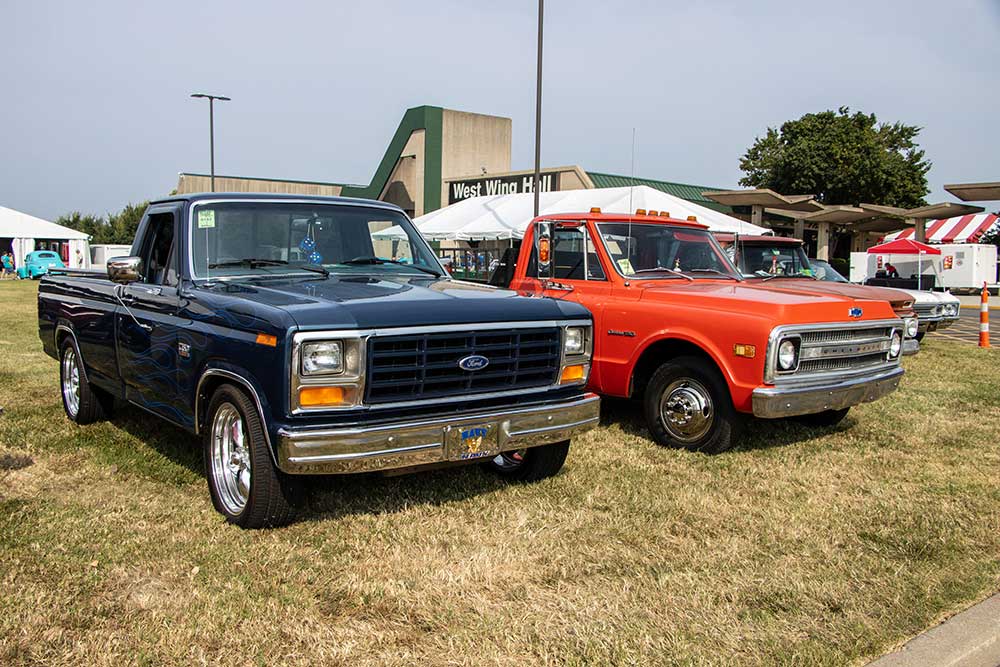
The newer the F-150, the more complicated things can get when it comes to working on your truck yourself. Modern electronics, multi-cam engines, and forced induction can definitely make things confusing for those who aren’t used to working on them! That being said, today’s diagnostic equipment is better than ever and can usually help pinpoint the cause of any problems pretty easily.
In the end, some folks feel more comfortable tuning a carburetor with a screwdriver and a careful ear than they do tuning through a laptop, so whatever floats your boat is good with us!
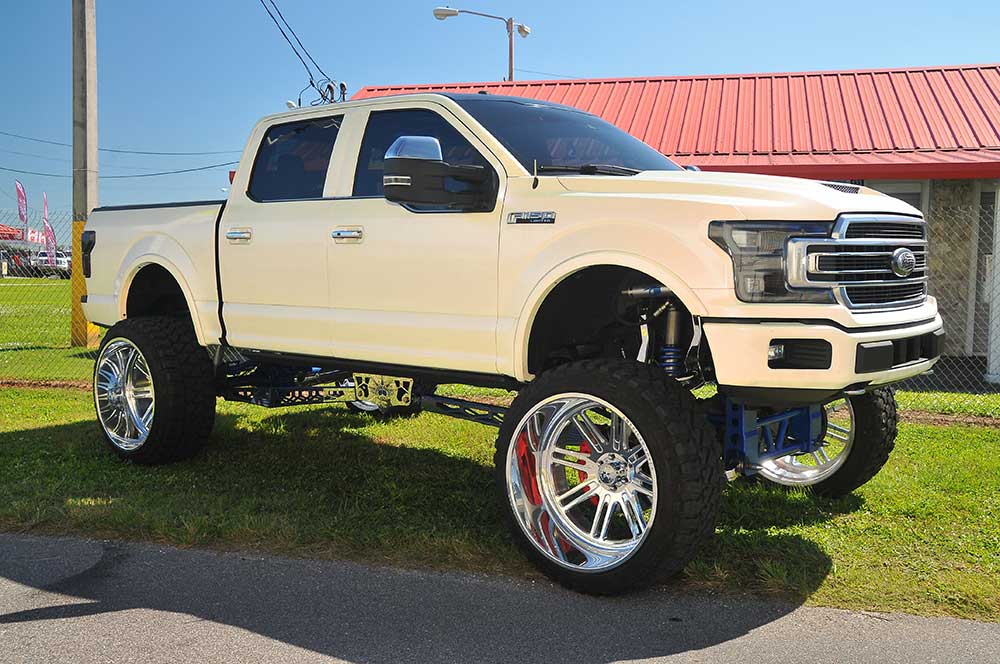
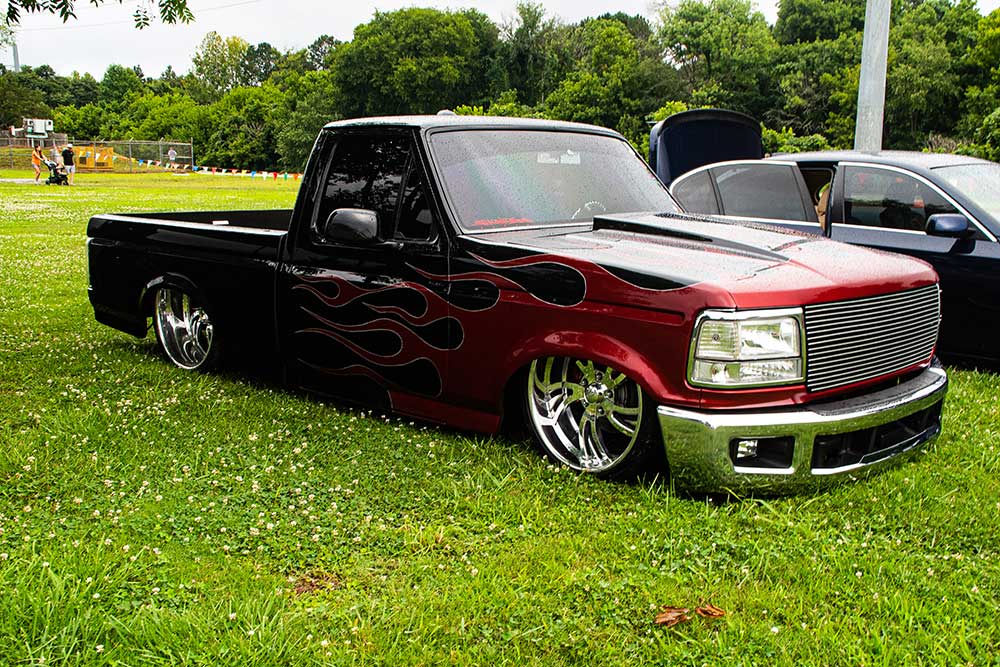
Oh, you betcha it can be lifted! In fact, several companies already have lift kits for the Lightning in full production. We’ve seen up to 3-inch spacer kits available as of this writing, but we’re sure that eventually someone will go even bigger. The problem for the average Lightning owner, however, is the fact that the truck has an independent rear suspension, which can be limiting due to drive axle angles.
Past generations have been built in a multiple plants all over the U.S. (as far west as Long Beach and San Jose, California), and around the world depending on their intended market.
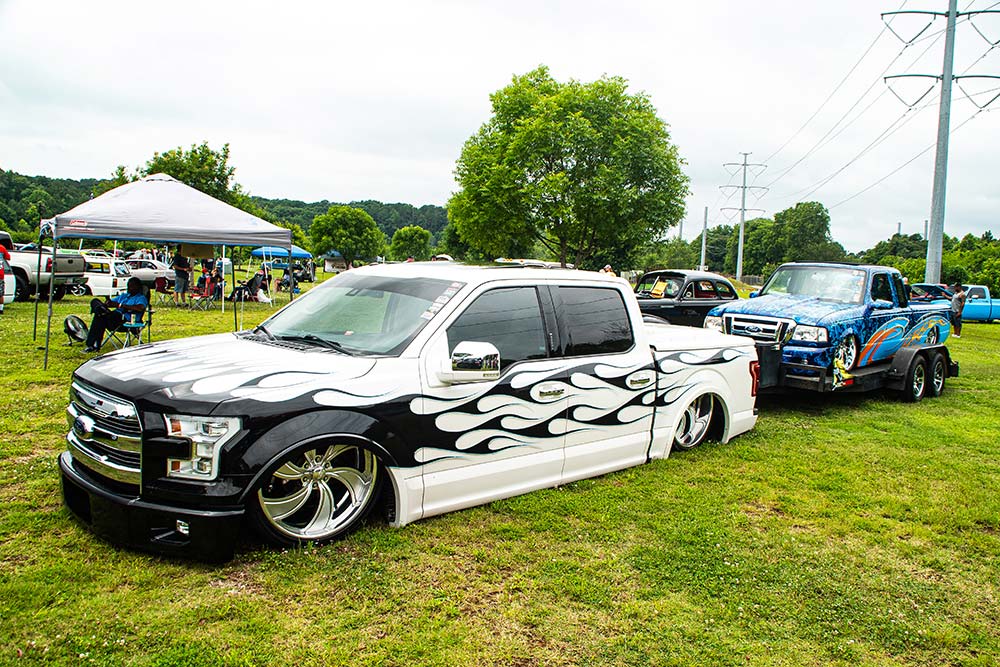
Today’s F-150s are built at Ford’s Kansas City Assembly Plant and the Dearborn Truck Plant, which has produced F-series trucks since 1948. Also known historically as the River Rouge Plant, it is also where the new EV F-150 Lightning is built.
Past generations have been built in a multiple plants all over the U.S. (as far west as Long Beach and San Jose, California), and around the world depending on their intended market.
You may be surprised to find out that the first diesel available in the F-150 wasn’t that long ago—2018—with the 3.0L Powerstroke V-6. Unfortunately, the increasing popularity of the EcoBoost engines meant that as time went on, fewer F-150 buyers bought the Powerstroke, making 2021 the last model year in which you could order an F-150 with a diesel. We’d love to see another diesel engine between the F-150’s fender badges some day, but only time will tell if that will ever be a reality again.
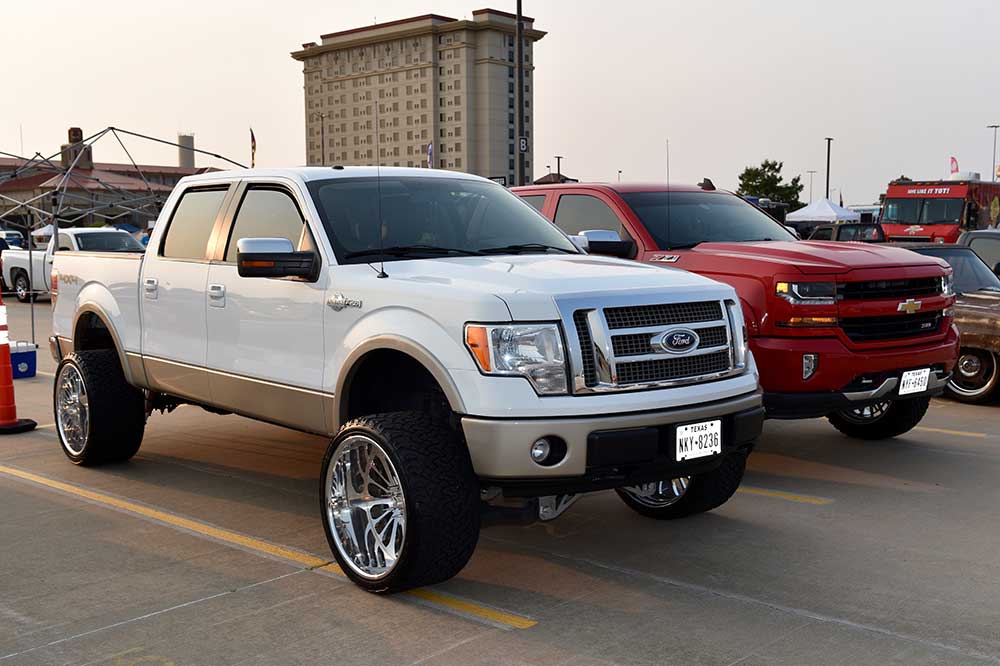
Yup, all F-150s from model year 2015 and newer have aluminum bodies (cab, bed, fenders, etc.), replacing the steel panels of years past. The biggest advantage is obviously weight savings, but can you believe that the switch to aluminum resulted in an almost 750-pound reduction in curb weight? The 14th generation (2021+) has the same aluminum construction, so we foresee aluminum being Ford’s material of choice for the F-150 for at least the next few years.
The F-150 name didn’t completely replace the F-100 until the 1984 model year, when it became the sole option for Ford 1/2-ton trucks and has remained so ever since.
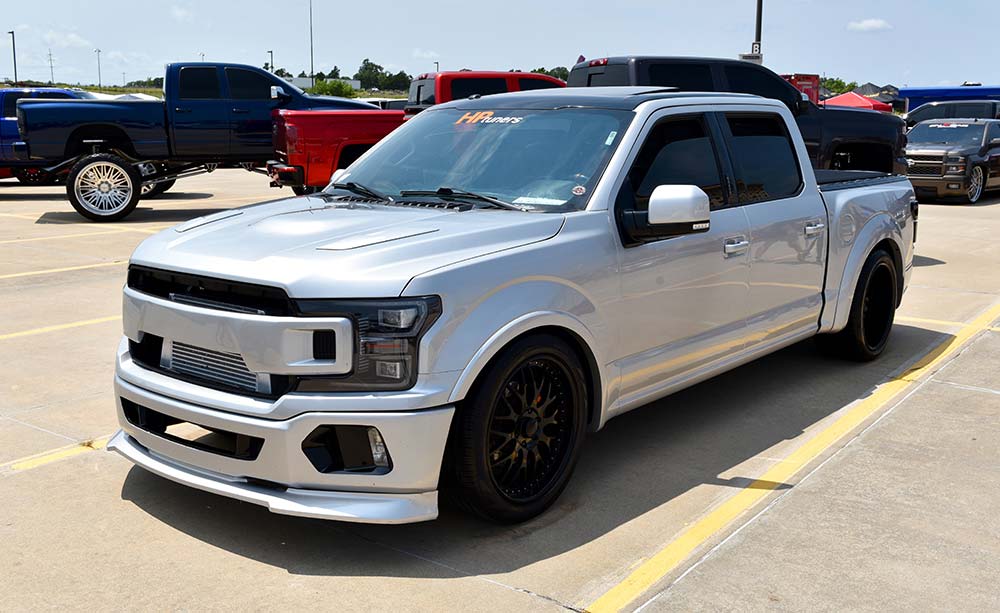
F-series models date all the way back to the 1948 model year, when Ford’s different truck models were named, F-1, F-2, F-3, etc., to signify 1/2-ton, 3/4-ton, and higher payload capacities. With the introduction of the ‘53 F-series, the naming was changed to F-100, F-250, F-350, et al. It wouldn’t be until the 1975 model year that the F-150 name would be introduced for a slightly heavier duty version of the F-100 (similar to Chevy’s Big-10 and GMC’s Heavy Half trucks). The F-150 name didn’t completely replace the F-100 until the 1984 model year, when it became the sole option for Ford 1/2-ton trucks and has remained so ever since.
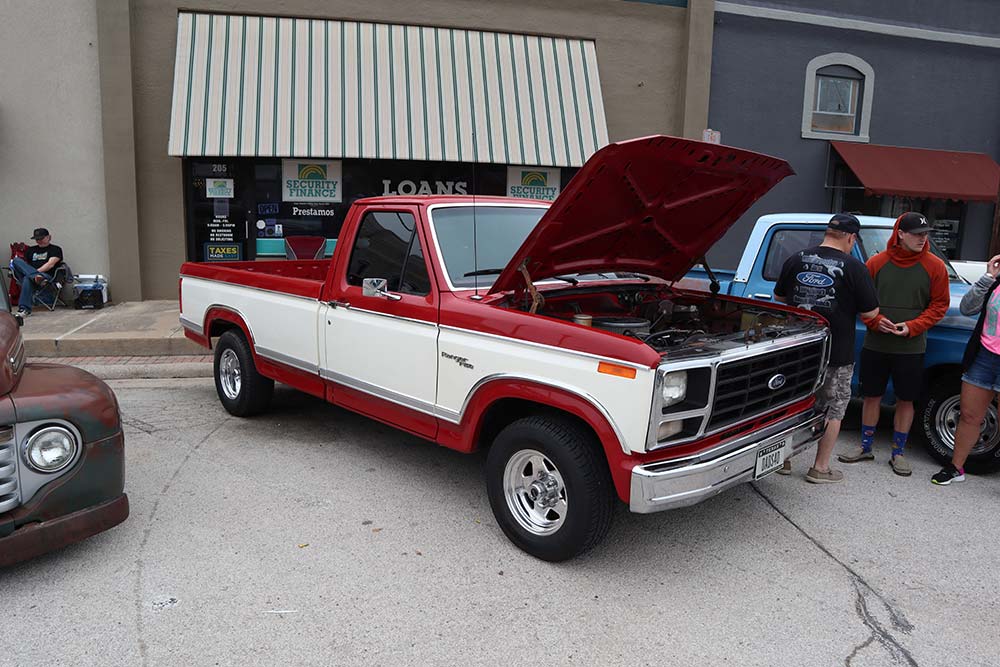
Well, this one is going to depend on what year F-150 you’re talking about, but thankfully it’s pretty easy to remember since Ford used the same lug patterns for many years at a time. The 1975 to 1996 F-150s used 5×5.5-inch (or in metric, 5×139.7mm), 1997-2004 F-150s used a 5x135mm bolt pattern, and 2005-current F-150s use a 6x135mm bolt pattern.
We thought this was a weird question—after all, how do you narrow down the best and worst years of a truck? Well, once we started researching, we remembered all of the issues that certain model years had when introduced. For instance, when the 11th generation F-150 was introduced as a 2004 model, it was plagued by so many problems that it was described by some as the worst F-150 in history!

Some of the problems were major, such as spark plugs ejecting themselves from the cylinder heads, while others weren’t as terminal, like faulty window regulators. By this point, we’re sure that most of the trucks affected by these problems have been long since fixed, so while you should be mindful of them while shopping for a used F-150, the proper paper trail of repair receipts should put your mind at ease. It’s important to note that the 2005 model year had its share of similar problems, so be sure to do your due diligence on those as well.

Oh, and the best year for the F-150? Among the older models, the ‘93s are well known for their durability and ease of maintenance, while ‘15s tend to have the highest satisfaction ratings among the more modern F-150s.
Share Link